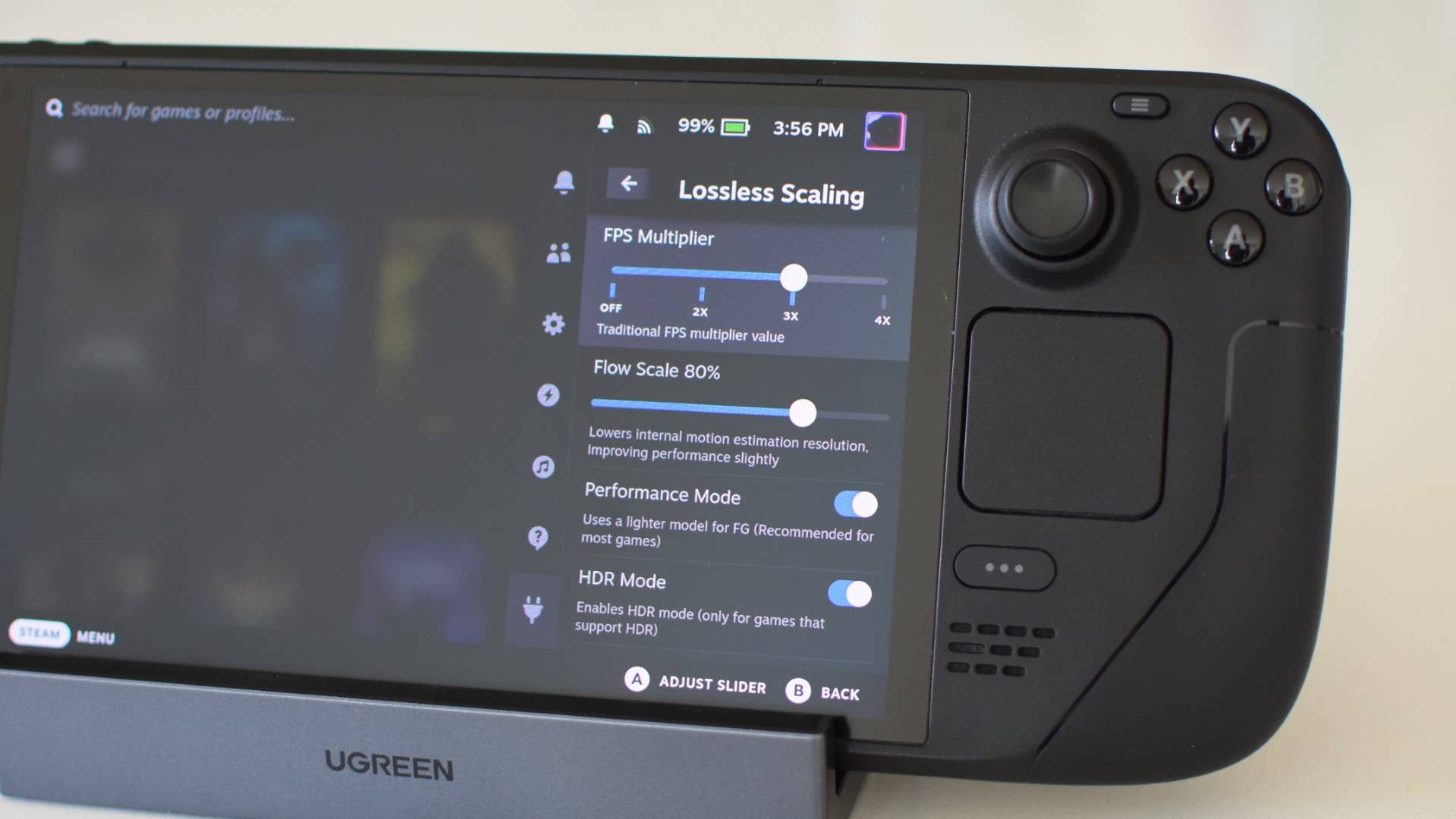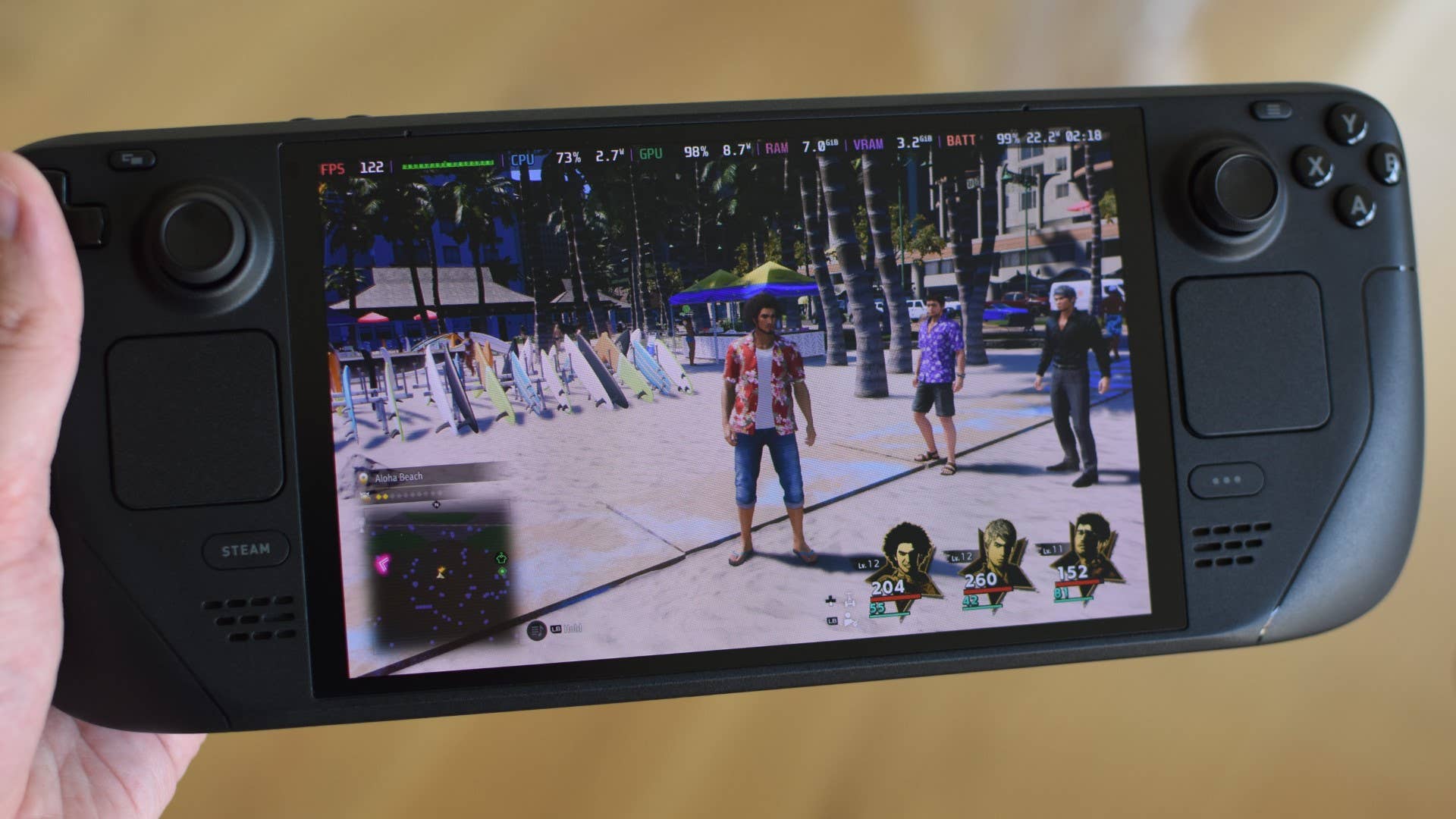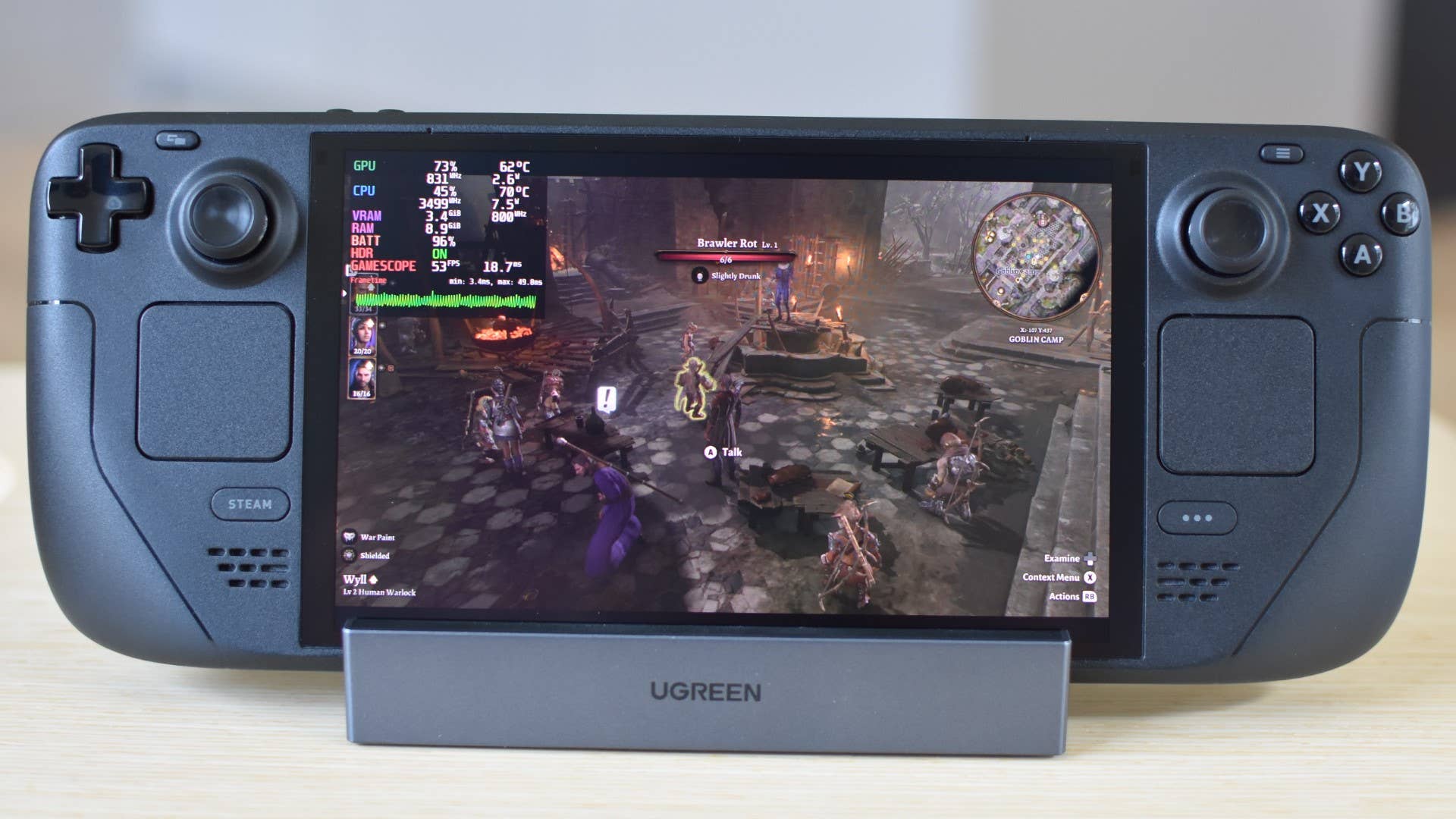Over the past week or so, Steam Deck circles have been filled to their plastic curves with chatter over Decky Lossless Scaling: a plugin for the handheld’s Decky Loader toolbox that makes the game-agnostic frame generation of Lossless Scaling work, more or less, in the Deck’s main Gaming Mode. Quite the feat, considering Lossless Scaling itself is officially unsupported on SteamOS.
In truth, this is a veritable Russian doll of unofficial spinoff projects. The plugin, by developer xXJSONDeruloXx, is based on the separate lsfg-vk by PancakeTAS, which is in turn a Linux compatibility layer for the original, Windows-based Lossless Scaling (and, while I’m crediting folk, a nod also goes to YouTubeist Deck Wizard for pointing this all out first). The long and short of it is that once everything is set up, you can make your Steam Deck do its best DLSS 4 impression by attempting to double, triple, or possibly quadruple the framerate output in your choice of games – though having tried it in a few myself, I’m not convinced you’ll always want to.
The Steam Deck could, to be sure, use a hand keeping its frames counts up. Other handheld PCs routinely outperform it and plenty of modern, high-fidelity games are unable to adequately run at all. Frame generation doesn’t actually boost performance, only adding algorithm-spun approximations of new frames in-between the real ones, but the frame gen tech served up by DLSS, FSR, XeSS on desktops can look visually convincing in the right conditions. Who could blame a Deck owner, living hand to mouth on 30fps scraps, for taking up this offer of a free lunch?

Especially when, in at least some games, it sorta-kinda-maybe does the trick. Even on Low settings with Performance-level FSR upscaling, Doom: The Dark Ages’ framerate falls into the twenties with enough regularity that Valve deemed it Unsupported on the Steam Deck. But, after applying Lossless Scaling on 3x mode, it usually kept above a smooth 60fps, peaking at 80fps and only falling as far as 55fps during a particularly explosion-ridden bit. While the true frame count was likely more in the 25-35fps range, and frame gen did diddly squat to improve aiming responsivity, my eyes were successfully tricked into seeing The Dark Ages as running smoother than it really was. I’d definitely consider it playable, especially after enabling the plugin’s Mailbox Vulkan override, which disables V-Sync to counteract the input lag that frame generation naturally adds.
Better yet was Like a Dragon: Infinite Wealth. On its Medium preset, I got between 36fps and 45fps while mooching around the Hawaii open world, rising to 91-124fps with 3x frame gen. That’s so high that my Steam Deck OLED’s refresh rate couldn’t even display them all, and again, there was a clear upgrade to visual smoothness. If there was an input lag bump, it was also much easier to ignore in this turn-based roleplayer than with Doom’s snap-aim shootery.

Alas, not all frame gen stories have happy endings. Elden Ring sounds like a prime candidate for this sort of thing: it’s very often forced down to 30fps on the Medium preset I tested at, sometimes slightly lower in particular parts of the open world, so multiplying that output should theoretically deliver a very noticeable polishing. Sadly, and despite using the plugin’s recommended settings (Performance mode with Flow Scale set to 80%, if you want to try this at home), frame-genned Elden Ring never actually looked as smooth as the numbers suggesting it should have. On my original LCD Steam Deck, 3x mode was filling out the 60Hz refresh rate, yet I could only perceive a very modest slickness enhancement, and after switching to the 90Hz OLED model, a 74-90fps count still only looked like 50-60fps in motion.
As with earlier versions of AMD’s FSR 3 frame gen, inconsistent frame times are the prime suspect for this odd mismatch between framerates and final visuals. Frame times are the lengths of the gaps between each new frame being shown, and if they’re not consistent, you end up with stuttering or jittery camera movement of the sort I’d seen here.
Still, Elden Ring at least fared better than Baldur’s Gate III. Not only did this receive the thinnest smear of extra frames – 40-50fps, on Medium quality with Quality FSR upscaling, rose to just 49-56fps on 3x mode – but it was also riddled with visual artifacts and glitchy frame gen errors, particularly around the edges of the screen. I tried to massage the numbers more deeply by switching to 4x mode, but this barely got BG3 across the 60fps line, while worsening the artifacts and utterly drowning the controls in input lag molasses. Which, unlike in Infinite Wealth, were sticky enough to actively annoy.

What’s worse is that I was quite hopefully for BG3 after its pre-frame gen test run, as frame generation works usually best with games that can already pump out a decent measure of standard frames by themselves. That not only allows for much higher total frame counts, after the interpolation trick is pulled, but helps keep latency down as well. It clearly didn’t happen here, mind, which you can probably take as confirmation that truly “for any game” frame generation is still some ways off.
To be fair, both the Decky plugin and the compatibility layer it’s based on are in ongoing development: when I first installed Decky Lossless Scaling last Friday, it was on v0.3.1, and when I came back to it this Monday morning, it had advanced seven public versions to v0.6.7, gaining a handful of new settings and quality-of-life features along the way. Between this pace of change and lsfg-vk’s own progress, it’s very likely that game compatibility will improve. I’ll be keeping an eye out for the plugin’s v1.0 release for that reason, though right now, it feels more like an intriguing experiment than an essential Steam Deck upgrade on par with Lutris. Or, indeed, Decky Loader itself.
